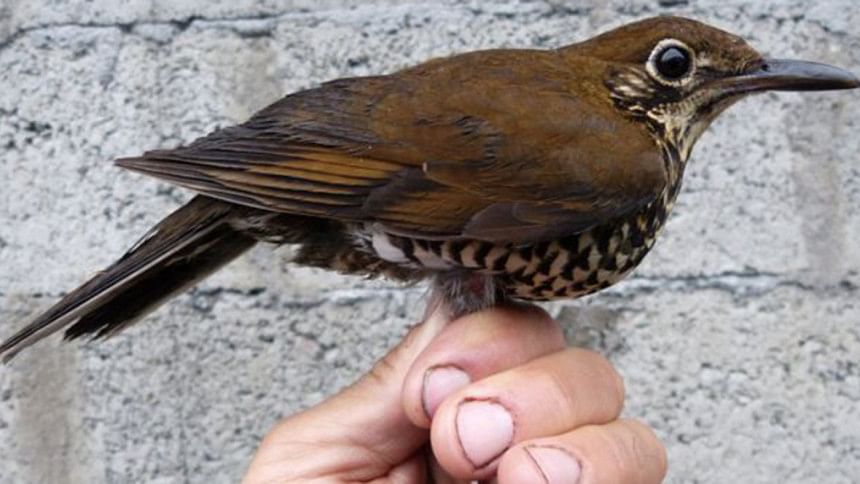Tuneful song reveals new species of Himalayan thrush

Scientists have described a new species of bird in northern India and China, called the Himalayan forest thrush.
During fieldwork in the mountains, researchers noticed that thrushes in the forests sang much more musically than those on the rocky peaks.
They then discovered physical and genetic differences as well, and have now declared the known "plain-backed thrush" to be two distinct species.
The mountain-dwelling variety has been re-christened the "alpine thrush".
"There aren't too many new birds to be found in the world," lead author Per Alström told the BBC. "So it's exciting when you find one."
The Himalayan forest thrush is only the fourth species of bird discovered in India since independence in 1947.
'INCREDIBLY ILUSIVE'
Prof Alström, from Uppsala University in Sweden, worked with an international team of researchers on the study, which is reported in the journal Avian Research.
They gave the new thrush the scientific name Zoothera salimalii in honour of the late Indian ornithologist Dr Salim Ali.
"He did a lot of work on Indian birds and has been really important for bird conservation and knowledge about birds in India," said Prof Alström.
The discovery began with some careful listening on a field trip, back in 1999.
"I was in Arunachal Pradesh with an Indian colleague, Shashank Dalvi, and we noted that there were two different groups of what was previously called the plain-backed thrush, that occurred at different elevations, in different habitats."
One set of birds, found above the tree line, sang quite a harsh, scratchy-sounding song; the other, found in the forests just below, was more tuneful.
"They had - to us - incredibly different songs. We couldn't at first find any differences in plumage or structure between them. But we didn't actually see the forest one very well, because it was extremely elusive - extremely hard to see," Prof Alström recalled.
Several years of detailed study ensued, as the team compared wild birds from India and China with specimens from 15 museums around the world.
This included DNA analysis, which confirmed what the researchers had suspected from hearing the birds' songs: the two groups have bred separately for several million years.
"They really are very different, even though they look superficially very similar to each other," Prof Alström explained.
"They have had separate evolutionary histories for a very long period of time - possibly the same length of time as humans and chimpanzees have been separate from one another."
ONE BECOMES THREE
The team thinks that, all those years ago, the two populations began as one species but branched out as they evolved to cope with the demands of the peaks and the forests.
"The alpine thrush has longer legs and a longer tail, proportionately, than the forest bird, which I'm sure are adaptations to its habitat. Because longer legs are more useful in open habitats than in forest."
And based on their comparisons to museum specimens, Prof Alström and his colleagues say the original "plain-backed thrush", or Zoothera mollissima, was the mountain-dwelling variety.
"So the alpine thrush will actually retain the scientific name of the original species," he said.
Meanwhile, on their trips into neighbouring parts of China, the researchers also found that a different thrush population, previously considered a sub-species, also deserves its own classification.
The newly named "Sichuan forest thrush", Zoothera griseiceps, is also physically and genetically distinct, with a song that is even more musical than its relatives in the Himalayan forest.
"So out of this single species, we got three different species," Prof Alström said.
The British Trust for Ornithology said that this type of research was important because discovering separate species can afford greater protection to the different birds and their habitat - for example, if the new species faces different threats from its relatives.

 For all latest news, follow The Daily Star's Google News channel.
For all latest news, follow The Daily Star's Google News channel. 








Comments